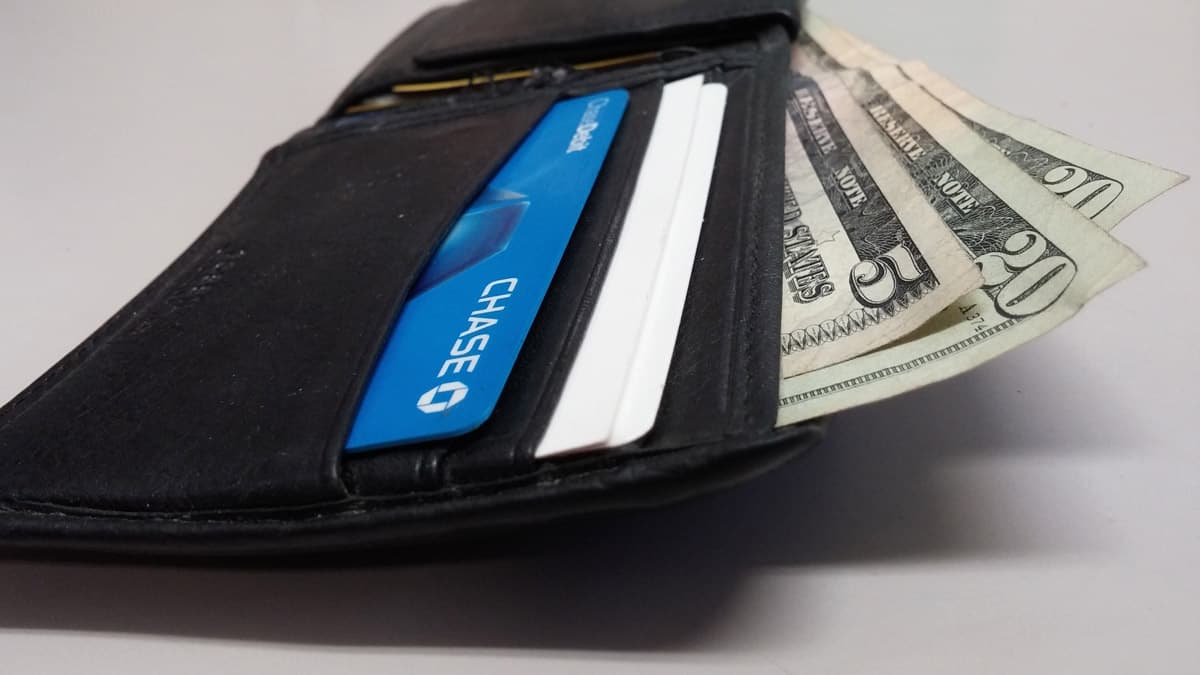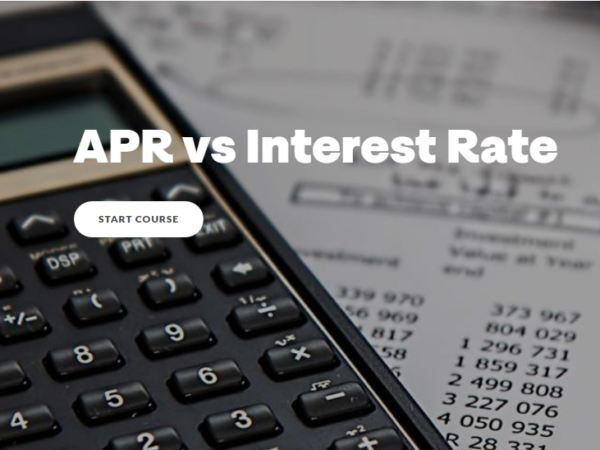Understanding Cash Flow Loans, Cash Flow Financing, and Cash Flow Advances
Cash flow loans may be a quick way to get capital, but they can be a risky investment. Don’t sink your business; learn more before borrowing.

There are many reasons why your businesses may need financing: as a startup, you may not have enough to cover all the costs involved with getting off the ground; as an existing business, you may want to expand, investing in more inventory, a larger staff, or a bigger space. You may need to buy equipment or you just may need some money to help you out of a temporary cash-flow crunch.
These are all valid reasons, and there are financing options available for all of them. As you explore them, it’s important to understand all of the terms and how they may impact your business going forward.
One type of loan to be particularly careful with is the category known as Cash Flow Loans. You want to make sure you fully understand the impact a cash flow loan could have on your business before taking one out.
What are Cash Flow Loans?
In some ways, it’s easier to understand this type of loan by explaining what it isn’t, which is a traditional bank loan. Generally, banks make lending decisions based on a combination of factors including your credit history, how much you have invested in the business, the collateral you have to offer, and the profit and cash flow of your business. They use these to determine your capacity to pay them back-in other words, what their risk is. It can be a fairly time-consuming process filled with documentation, and still, many small businesses are turned down.
That opened up the possibility for a new category of lenders that use a far narrower range of factors to determine your qualifications to borrow, concentrating almost exclusively on your cash flow instead of the assets of your business.
Cash flow loans are a type of business financing where a lender evaluates your company’s future cash flow projections to determine loan eligibility, rather than focusing on physical assets or credit score. This makes them especially attractive to businesses with limited collateral but strong sales.
Unlike traditional business loans from banks that require collateral, a long credit history, and extensive documentation, cash flow loans emphasize your business’s real-time performance — including revenue trends, transaction volume, and customer reviews.
How Does Cash Flow Financing Work?
With cash flow financing, you’re basically borrowing against the money you expect to receive in the future, and a lender will make the decision about whether or not to approve you based on those projections and your past performance. Lenders use computer algorithms that factor in all sorts of data, such as transaction frequency and volume, seasonal sales, expenses, returning customer revenue, and even Yelp reviews.
On the plus side, if your business has the sales to cover it, you may be able to qualify for a cash flow loan even if your credit is less-than-stellar. The application process for cash flow financing is pretty simple, and you’ll have a decision relatively quickly, usually within 24 to 72 hours. Depending on the lender, you may be able to borrow anywhere from $5,000 to $250,000.
With some loans, the lender will be paid back a percentage of the sales you make, as you make them until the loan is paid off. With others, you’ll pay a fixed amount over a predetermined time period, so your payments will always be the same.
Cash flow financing works by lending money based on anticipated revenue. Lenders use sophisticated data algorithms to evaluate metrics like:
- Daily transaction volume
- Seasonal sales fluctuations
- Expense ratios
- Revenue from repeat customers
- Online reviews (Yelp, Google, etc.)
Two Main Repayment Structures for Cash Flow Financing:
- Percentage-of-Sales Model: A fixed percentage of your daily credit card or debit card sales is automatically deducted.
- Fixed Daily Payments: A set amount is withdrawn from your business bank account each day, regardless of your revenue.
What Are the Downsides to Cash Flow Loans?
The Cost of a Cash Flow Loan: Because cash flow lenders don’t scrutinize borrowers in the same way as traditional lenders, the loans they make tend to be riskier investments. To make up for that, they charge higher interest rates and other fees.
Bloomberg Businessweek found that the average annual percentage rate for cash flow loans from cash flow lender OnDeck was 54%, significantly higher than the 7 – 9% charged by banks and the 10 – 20% charged by reputable microlenders. Twenty-one of OnDeck loans had APRs of more than 100% with the highest being 134%.
Paying these loans off early if you’re able to do so doesn’t help; many of them don’t allow it or impose heavy prepayment penalties.
Fees of a Cash Flow Loan:
Not only are the interest rates on cash flow loans high, but most of them also come with heavy fees, as well. Most cash flow lenders charge an origination fee of about 2.5% of the amount you are borrowing to process the loan. There will usually also be sizeable charges for late payments or if there are insufficient funds in your account to cover a scheduled payment.
Liens and personal guarantees.
Cash flow loans are sometimes marketed as “unsecured business loans,” which means you don’t need the collateral a bank would require to be approved. This isn’t entirely accurate, however. Cash flow lenders DO require security to lower the risk of losing their investment if you default, but instead of acquiring a specific asset from you, they will put a general lien on your entire business. You will also have to sign a personal guarantee for the loan, meaning if your business cannot pay it back, you will be personally responsible to do so.
Cash Flow Loan Automatic Payments:
One way cash flow lenders cover the increased risk of these loans is by taking payments directly out of your bank account to make sure they get paid back. Depending on the company and your loan terms, a payment might be taken every day or several times a week.
Some will go the fixed payment route, removing an agreed-upon sum each time, and others will take a percentage of your daily credit and debit card sales until the loan is paid off.
Why is this dangerous? In the first case, where fixed payments are taken daily, think about what your company’s cash flow is like. It varies from day to day and month to month. You may be able to budget for a monthly expenditure like a loan payment, but are your finances down to the penny on a daily basis? What happens if you’re short that day and can’t meet the payment? What kind of extra fees will you now be hit with for having insufficient funds?
The second instance, taking a percentage of your sales, may sound like a better option, but it, too, is problematic. Many small businesses work on small profit margins. Depending on how much a lender is taking off the top, you may be left with precious little to meet your other obligations, much less anything left over. What does that mean for your business? No money for advertising, nothing to put away for expansion, and certainly nothing to save for future cash flow shortages.
The effect is a vicious cycle. You might borrow more money to pay back the money you’ve already borrowed. If you’re lucky, you’ll be able to stay afloat, but it’s not unusual for businesses to crumble under snowballing debt.
Cash Flow Loans Often Have Automatic Renewals:
To keep you in a loan cycle, some lenders will automatically renew a loan if it becomes past due. On the plus side, this would give you more time to pay, but the downside is you’re now saddled with additional fees, interest, and a longer payment term, making it that much more difficult to catch up and climb out of debt. This is another tremendously important reason to thoroughly read a loan agreement before you sign anything.
Lack of Transparency.
Many online lenders aren’t actually lenders but are, in fact, brokers. The downside of this is even less accountability, coupled with even higher fees. According to Businessweek, “OnDeck pays a commission to brokers who bring borrowers to their platform. That generally isn’t disclosed to borrowers; instead, brokers say, OnDeck approves a borrower for one rate, then allows the broker to charge another, higher rate and keep the difference. OnDeck limits how much its partners can charge to 12%. On a $50,000 loan, that’s $6,000.” In other words, $6,000 over and above what you could have gotten it for yourself.
Of course, having a broker as a middleman adds considerably to the cost of a loan. Businessweek cites an agreement from a subsidiary of CAN Capital that shows the lender expects to be repaid 14% interest on a six-month loan, and “…its most preferred brokers can tack on an additional 17%, making the total cost to the borrower 31% of the loan. On a $50,000 loan under those terms, a small business owner would pay back $65,500.”
Cash Advances as Cash Flow Loans
are another form of cash flow loans. They make their loan decisions in much the same way, largely by analyzing your cash flow. As opposed to an outright loan, however, you are selling a portion of your future sales in exchange for getting the money upfront. The money gets paid back by siphoning off a percentage of each sale you make.
Technically, cash advances aren’t legally classified as loans, and because of this, they’re not subject to the usury laws that limit how much they can charge.
Kabbage is a lender that operates through the cash advance model. According to its website, fees range from 1% to 13.5% of your loan amount for the first 60 days and another 1% for the remaining 4 months of a 6-month loan. Of course, as we learned earlier, monthly fees add up. For example, a 7% fee for even one month equates to an APR of 84%, which, when you do the math, is completely different from what you might initially think you’re paying.
A blogger at Fat Daddy’s Sports, a collectible baseball card site, detailed his difficulty in dealing with the fees and payments associated with his Kabbage loan. Together with the comments on the blog, it’s quite a cautionary tale about what a deal like this could mean for your company.
What Is the Alternative to Cash Flow Loans?
There’s no doubt that it can be tough going for small business owners when approaching banks for loans. That’s what gave rise to the alternative lending industry, paving the way for products such as cash flow loans, payday loans and merchant cash advances.
There are better alternatives, though. If you have a business relationship with a bank, then by all means start there. If you don’t qualify, a local credit union might be a good fit. Credit unions are non-profit organizations designed to serve their members. For unsecured loans, many credit unions will offer up to $50,000.
Another option is a non-profit lender like Accion Opportunity Fund. Microlenders, also sometimes referred to as “Community Development Financial Institutions (CDFIs)” specialize in lending to small businesses, and generally, the guidelines are not nearly as strict as with traditional banks. Because microloans are generally extended to those without an extensive business history or collateral, interest rates are a bit higher than from traditional banks but considerably lower than with a cash flow loan, and with a lot more transparency and legal protections for you as a borrower.
Cash Flow Loan are Too Risky
Cash flow loans may offer speed and convenience, but they come with high costs, hidden terms, and potential debt traps. Before you borrow, compare all your financing options, read the fine print, and ensure your repayment plan aligns with your business’s long-term goals.









